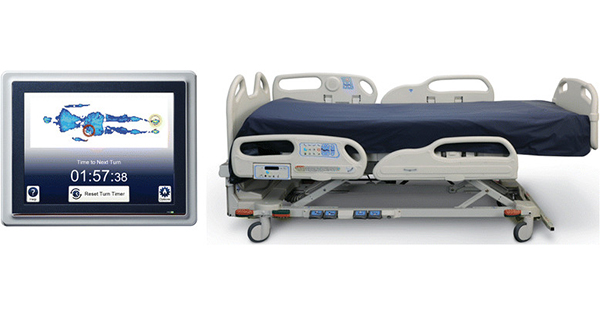The total hip replacement (THR) has evolved significantly over the last century, ensuring it to be the most successful orthopaedic procedure for relieving chronic pain (Hansson et al, 2008). Metal on metal (MoM) THR and resurfacings were a significant part of the evolution process, which still impacts the NHS today. This was initially celebrated as a low-wear, high performance device ideal for younger, more active patients (Hart et al, 2014); however, it became subject of controversy after the introduction of larger femoral head components in the mid-2000s (Erivan et al, 2020). The increase in implant failure caused by adverse reaction to metal debris (ARMD) led to the decline in the popularity of metal bearings (Langton et al, 2010). Irreparable soft tissue damage caused by ARMD is the main concern when considering patients with metal-bearing hip prosthesis for revision surgery because it can result in poor outcomes (Martharu et al, 2018).
The Medicines and Healthcare products Regulatory Agency (MHRA) guidance advocates early revision surgery for patients with abnormal imaging, and/or rising blood metal ion levels, and/or hip-related clinical function/deteriorating Oxford Hip Score (MHRA, 2017). Hughes et al (2018) credit the guidance for the improvement in revision outcomes for patients with ARMD, suggesting that without regular monitoring and low thresholds for revision, outcomes would deteriorate. However, ARMD is identified via imaging, such as MRI or ultrasound, and not the presence of elevated metal ion levels, raising the question as to whether these blood tests are worth completing (Hughes et al, 2019).
In 2012, the MHRA published guidance on how patients with MoM THR and resurfacings should be monitored (MHRA, 2012). The guidance encourages early revision in patients with metal-bearing implants after considering blood metal ion levels, functional skills and imaging.
The topic of metal ion monitoring is divisive. Despite being recommended by the MHRA (2017) as a method of identifying patients at risk of ARMD, Atrey et al (2017) suggested this is unhelpful in predicting the occurrence of ARMD, noting that Cr was found to have no correlation in symptoms or pathology. Hart et al (2012) supported this assessment, identifying that it is Co rather than Cr that initiates an inflammatory reaction. Knight et al (2011) theorised that poor implant design and incorrect implantation technique are to blame for failure of MoM implants rather than the material of the two joint surfaces (the bearing), highlighting how little is known about the long-term effects of elevated metal ion levels on other body systems.
In the East Kent Hospitals NHS Trust, around 500 patients were affected by the MHRA 2012 guidance and the MoM surveillance service was developed. Audit data for the MoM surveillance service have been collected annually since 2013. Patients provide a blood sample to measure Co and Cr levels. They also complete two questionnaires — the Oxford Hip Score (OHS) and the University of California Los Angeles (UCLA) activity of daily living scale (Murray et al, 2007; Morup-Petersen et al, 2021). The OHS is recommended in the 2017 MHRA guidance as the functional score of choice. Naal et al (2008) promote the UCLA scale as being reliable, feasible and valid. The UCLA score was adopted in the Trust to assess if a patient’s level of activity had direct relation to their hip function.
The MHRA guidance was updated in 2017 to significantly increase the intensity of follow-up recommendations. It specifically recommended that all patients with MoM bearings, regardless of symptoms, should undergo annual follow-up. This included patient groups who were previously considered low-risk, such as women with hip resurfacings and men with small femoral head components. The threshold of seven parts per billion for whole blood metal ion levels was also established as the point of concern (MHRA, 2017). The surveillance service within the Trust was adapted accordingly.
This article presents the results of a retrospective analysis of 536 patients.
Ethics committee approval
Approval for the study was sought from the local Trust Ethics department to utilise the existing audit data. The ethics committee did not consider this to be research; therefore, Health Research Authority approval was not necessary.
Aim
The aim of the study was to establish if there is a relationship between blood metal ion levels and hip function scores.
Question: Is there a correlation between blood metal ion levels and hip function in patients with metal-bearing hip implants?
Null hypothesis: It is suspected that there will be no correlation between Co or Cr ion levels and OHS.
Methods
This study is an observational audit conducted over an 8-year period, focusing on patients with metal bearing hip implants. The audit aimed to monitor patients with elevated blood metal ion levels in relations to their symptoms to establish any correlation.
A total of 536 patients were included in the metal hip surveillance audit. These patients were divided into two groups:
- Patients who have never had a raised blood metal ion level.
- Patients who require annual follow-up due to at least one elevated blood metal ion result.
For this study, only patients requiring annual follow-up due to elevated blood metal ion levels were identified for analysis, totalling 87 patients.
Data collection
The highest Co result with the corresponding OHS was noted for each of these 87 patients. When patients did not have an OHS within 12 months of their highest Co result, they were excluded from the analysis, which led to 26 patients being excluded from the study. The remaining 61 were further reviewed and subdivided into three groups to identify those who have elevated blood metal ion levels and no symptoms:
- Had revision surgery or are awaiting revision surgery (10 patients)
- Have symptoms, but declined revision surgery (9 patients)
- Asymptomatic, but have had at least one elevated blood result (42 patients).
The 42 patients identified in group C are of particular interest, as the literature revealed little evidence as to how best to continue monitoring them. Figure 1 demonstrates the cohort details.
Variables:
The primary variable collected for analysis included:
- OHS
- UCLA activity score
- Blood Co levels
- Blood Cr levels.
Data analysis
The OHS, UCLA, Co, and Cr results for each of these patients over the 8 years of audit data were extracted. In 40 of the 42 patients identified, the Co level was higher than the Cr level. This raised the question as to whether both blood results were required for analytical purposes. The mean of both Cr and Co were compared to rationalise the use of both.
To classify symptomatic and asymptomatic patients, the OHS and UCLA scores were compared. An OHS of 29 was chosen as the cut-off value for asymptomatic patients. Those with a score of 30 were placed into the symptomatic but declined surgery group. This decision was made after examining the corelation between OHS and UCLA scale [Figure 2]. Patients who appeared on the UCLA scale in position 4 (regularly takes part in mild activity) were considered to have an acceptable amount of activity when considering the age of this demographic. There were three patients who appeared to have good hip function but poor UCLA score, which we can put down to other causes for their poor mobility. Apart from these three, all patients with a UCLA score <4 had a corresponding OHS >29.
The data collected over the 8 years of audit for the 42 remaining patients were assessed for completeness. Any incomplete data sets were discarded leaving a total of 144 data sets with both OHS and Co level.
Results
To identify if both Co and Cr results were required for analytical purpose, the means for both were examined over the 8 years of collection [Figure 3].
It was observed that the Cr levels followed a similar pattern to that of the Co; however, they appear to be less sensitive. Due to this, it was decided to focus solely on the relationship between Co levels and OHS. Figure 4 shows the relationship between OHS and Co levels.
There appeared to be no relationship between the OHS and the increase in blood Co level. To be certain of this, a Chi-squared test was performed. The Chi-squared test works from the null hypothesis that no relationship exists between the chosen variables of the population being assessed; that they are independent of one another (Frimodig, 2020). A correlation of 0.45237 was calculated, demonstrating a poor correlation between OHS ad Co levels, thus supporting the null hypothesis.
Pearson’s correlation coefficient measures the strength of a linear relationship between two variables (Profillidis and Botzoris, 2019). A Pearson’s R correlation coefficient formula was conducted and an r value of 0.0624984 again confirmed a lack of correlation.
Bias
To avoid potential for researcher bias and researcher influence, the OHS and UCLA were posted to patients in advance. If patients had not returned the forms before attending their follow-up appointment or had forgotten to bring them to the appointment, they were given time during the appointment without the researcher present to complete them.
Discussion
As Hughes et al (2019) indicate, it is widely accepted that ARMD can cause destructive, irreparable soft tissue damage, and can demonstrate gradual progression. There is evidence of ARMD in patients who appear asymptomatic (Matharu et al, 2016a). The MHRA (2017) recommends an upper acceptable limit for whole blood Co or Cr level of 7 ppb. A Co or Cr level above this limit does not necessary result in a positive metal artifact reduction sequence MRI or mean that revision surgery will be required (Hughes, et al 2019).
Figure 4 demonstrates how the patients with the highest elevation of Co have low OHS. Coincidently, Matharu et al (2016b) suggest that Co is most effective at identifying patients at low risk of ARMD rather than identifying those with ARMD. Matharu et al (2015) highlight the need to refine the blood metal ion levels of concern, looking specifically at bilateral patients and whether thresholds differ dependant on implant type.
Having established that Co is more sensitive than Cr, it is worth asking whether there is a need to complete both tests. There is a potential saving of £15 per patient each time we request bloods if we only tested for Co. In group C alone, this would save £630 each year. The potential problem arises if there are patients with isolated elevation of Cr levels. There are currently two such patients in the MoM surveillance service, both of whom were excluded from this study due to not having an OHS within a year of their highest Co result. Some consideration would need to be made as to how we continue to monitor these patients.
The unknown effects of living with elevated blood metal levels is one of the biggest concerns to these patients (NHS, 2024).
A case study of a man with decompensated heart failure who had previously had bilateral MoM hip resurfacings found his death to be secondary to cobalt toxicity-induced cardiomyopathy (Giacon and Boon 2021).
A preliminary study into changes in the brain in asymptomatic patients with elevated blood metal ion levels 8 years post MoM hip surgery identified subtle changes in visible pathways and the basal ganglia (Clark et al, 2014). No noticeable deterioration in brain function was observed at the time. Further research was recommended following this study and work is currently under way to assess the impact of elevated ion levels on other body systems, although no results have yet been published.
Again, this is a reminder of the importance of treating the whole patient and not being reliant on test results. Hip function and patient feedback are essential in achieving this.
Alternative methods of managing patients with elevate blood metal ion levels have been tested. In their case study, D’Ambrosi and Ursino (2020) advocate the use of N-acetyl-cysteine to reduce blood Co levels. The result is of interest; however, further research is needed in this area, because this was tried on an individual patient who was asymptomatic with elevated blood ion levels.
Another study identified a genotype which may indicate the potential for a patient to develop pseudotumour following a MoM procedure (Kilb et al, 2018). Although this has merit, it is of no help to those already living with a metal-bearing prosthesis. Possibly, it is worth considering for patients preparing to undergo a metal bearing procedure.
Taking into consideration the lack of knowledge about the effect of elevated blood metal ion levels on patients’ overall well-being, continued monitoring of this patient group is clearly essential. It is perhaps worth consulting these patients about how they would like to be followed up. The Covid pandemic has made us all look at different ways of working (Thornton, 2020). Our patients might be adhere better with the data collection resources if we were to engage them in the development of new follow-up pathways. Funding other services to complete the data collection at local locations for the patients rather than them having to attend hospital frequently might be more appealing. This, in turn, could lead to more complete data for continued surveillance, allowing for continued audit reviews and service improvement.
Limitations
While this was a very worthwhile and important audit to undertake, highlighting how diligent the Trust has been in adhering to the MHRA guidance, some limitations were evident from the start and are not unique to this audit.
Postal questionnaires are currently the best option for the surveillance service because they allow the team more time for other clinical duties. By posting the questionnaires to the patients, there is more flexibility and less pressure on patients as to when they complete the survey (Willis, 2020). However, not all patients returned their forms.
Incomplete or absent data sets limited the quantity of data available for the audit. No records exist as to why patients failed to have bloods taken, or why questionnaires were not returned. These patients were still included in the study to increase our sample size.
The 2020 compliance was particularly poor, presumably due to the pandemic. The MoM surveillance service contacted each patient as usual with a letter containing a blood request form, OHS and UCLA questionnaires and details of how to have bloods taken during the lockdown. A phone number and email address were included so that patients could contact us for advice, but compliance was still poor. Incomplete data sets could be suggestive of patients experiencing no current problems with their hip, but could also indicate that the patient has more significant health issues to be concerned about (Wylde et al, 2005).
To overcome some of these limitations, more funding would be needed. This would enable a phone clinic appointment to be made, bloods could be requested prior to the appointment, and questionnaires could be completed over the phone. This would result in more complete data sets; ability to collect more data, such as other reasons for mobility issues, or why some patients do not wish to participate, and might help to identify other health issues within this patient group not currently believed to be linked to elevated blood metal ions.
The OHS is a patient-derived outcomes measure following THR. It was initially designed to be completed pre and postoperatively for hip arthroplasty patients to assess the success of the procedure. Rothwell et al (2010) suggest using the OHS as a predictor to revision surgery at 6 months post primary hip replacement. Having access to the post-operative OHS would give us better understanding of patient’s functionality in the immediate post-operative period.
Unfortunately, our data were not collected until after MHRA (2012) guidance was introduced, by which time some implants were already 10 years old. A review suggested that modern hip replacements are now expected to last for 25 years in 58% of patients (Evans et al 2019). However, Ninomiya et al (2018) reported deficits in hip function, decreased physical activity and an increased fall rate 10 years post THR, when compared to healthy adults of the same age. When considering this decrease in function, high OHS was assumed to be directly related to function of the MoM hip as no alternative reason was asked for. Patients could have been experiencing mobility or pain issues related to other health problems, but this could not be identified. Nilsdotter and Bremander (2019) acknowledged the limitation of using the OHS referring to the lack of questions regarding medication and mobility aids.
Conclusion
Given the long-term impact raised blood metal ions on the individual; regular monitoring and surveillance of patients who have received a metal bearing hip prosthesis must continue. The MHRA (2017) guidance clearly advocates as such. The necessity for Cr testing when the Co result is more sensitive should be investigated further. Significant savings could be made if we can reduce blood metal ion testing to one test. Patients who have isolated Cr elevation would need further planning but could continue as per MHRA guidance. Locally this would only affect two patients. New patients to the surveillance service would have to have both blood tests initially to establish if either were raised. Further assessment of patient’s feelings toward the way in which they continue to be monitored should be conducted in order to improve the current service, and further research into the long-term effects of living with elevated blood metal ion levels should be conducted.







